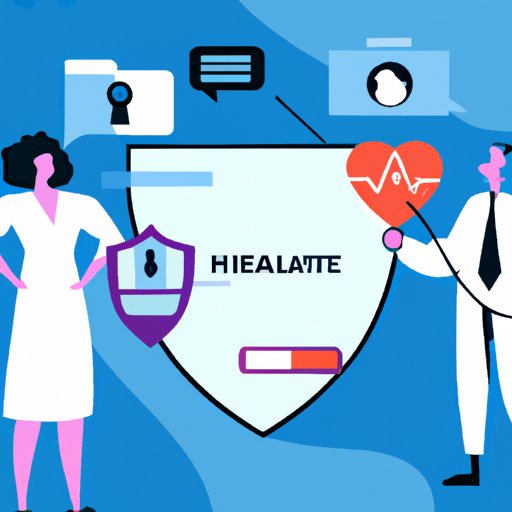Introduction
Health information exchange (HIE) is a secure way for healthcare providers to share and access patient health data electronically. It refers to the sharing of clinical information between two or more organizations via an electronic medium. By exchanging data in this manner, providers can make better informed decisions about patient care, reduce costs, and improve outcomes.
HIE is becoming increasingly important as healthcare organizations are increasingly looking for ways to use technology to improve patient care. According to a study published in the journal Informatics in Primary Care, “Data exchange between providers has become essential for improving the quality and safety of patient care.”

The Basics of Health Information Exchange
In order for HIE to be successful, certain components must be in place. These include a secure network, software that allows for the secure transfer of data, and a system for ensuring the accuracy and integrity of the data that is exchanged. Additionally, there must be an agreement between the parties involved in the exchange of data.
There are several different types of HIEs. The most common type is called an “electronic health record exchange” (EHRX). This type of HIE allows healthcare providers to access and share patient records electronically. Other types of HIEs include “direct messaging” (which allows providers to communicate directly with each other), and “interoperability networks” (which allow multiple healthcare organizations to connect to each other).
Once the required components are in place, HIE works by transferring data from one organization to another. This data is encrypted and sent securely over a network. The receiving organization then decrypts the data and adds it to its own database.

Understanding the Challenges of Health Information Exchange
While HIE offers many benefits, it also presents some challenges. One of the biggest obstacles is the lack of interoperability between different systems. Different healthcare organizations may use different systems, making it difficult for them to exchange data. Additionally, many healthcare organizations are reluctant to invest in the necessary infrastructure for HIE due to the cost.
Another challenge is the lack of standardization. Different healthcare organizations may use different formats for their data, making it difficult for them to share information. Additionally, different organizations may have different regulations regarding the exchange of data, making it difficult to ensure compliance.
Fortunately, there are ways to overcome these challenges. Organizations can work together to create standards for data exchange, which will make it easier for them to share information. Additionally, organizations can invest in the necessary infrastructure for HIE, such as secure networks and software. This will help to ensure that data is transmitted securely and accurately.
Examining the Impact of Health Information Exchange on Healthcare Delivery
HIE can have a significant impact on the quality of healthcare delivery. By allowing healthcare providers to access and share patient data electronically, HIE can improve patient care. For example, it can reduce delays in diagnosis and treatment, as well as improve communication between providers. Additionally, it can facilitate coordinated care, as providers can more easily access patient data across multiple organizations.
HIE can also reduce costs. By improving communication between providers, it can help to reduce the need for duplicate tests and procedures, thus reducing costs. Additionally, it can help to reduce paperwork, as providers can access and share data electronically rather than relying on paper records.

Investigating the Security and Privacy Concerns of Health Information Exchange
As with any exchange of data, there are concerns about the security and privacy of the data being shared. It is important for organizations to ensure that data is protected from unauthorized access and accidental disclosure. Organizations should also ensure that they are compliant with all relevant laws and regulations regarding data protection.
Organizations should also take steps to protect patient data. This includes using encryption and other security measures to protect data, as well as putting policies in place to ensure that only authorized personnel can access sensitive information. Additionally, organizations should ensure that they are compliant with any applicable laws or regulations regarding patient data.
Conclusion
Health information exchange (HIE) is a secure way for healthcare providers to share and access patient health data electronically. It can improve patient care by facilitating coordinated care, reducing delays in diagnosis and treatment, and improving communication between providers. Additionally, it can reduce costs by eliminating the need for duplicate tests and procedures and reducing paperwork.
However, there are some challenges associated with HIE, such as the lack of interoperability between different systems and the lack of standardization. Additionally, there are security and privacy concerns that must be addressed. Organizations should take steps to ensure that data is protected and compliant with all relevant laws and regulations.
Overall, HIE can have a positive impact on healthcare delivery by improving patient care, reducing costs, and facilitating coordinated care. It is important for organizations to understand the benefits, challenges, and security and privacy issues associated with HIE in order to make the most of this technology.
(Note: Is this article not meeting your expectations? Do you have knowledge or insights to share? Unlock new opportunities and expand your reach by joining our authors team. Click Registration to join us and share your expertise with our readers.)
